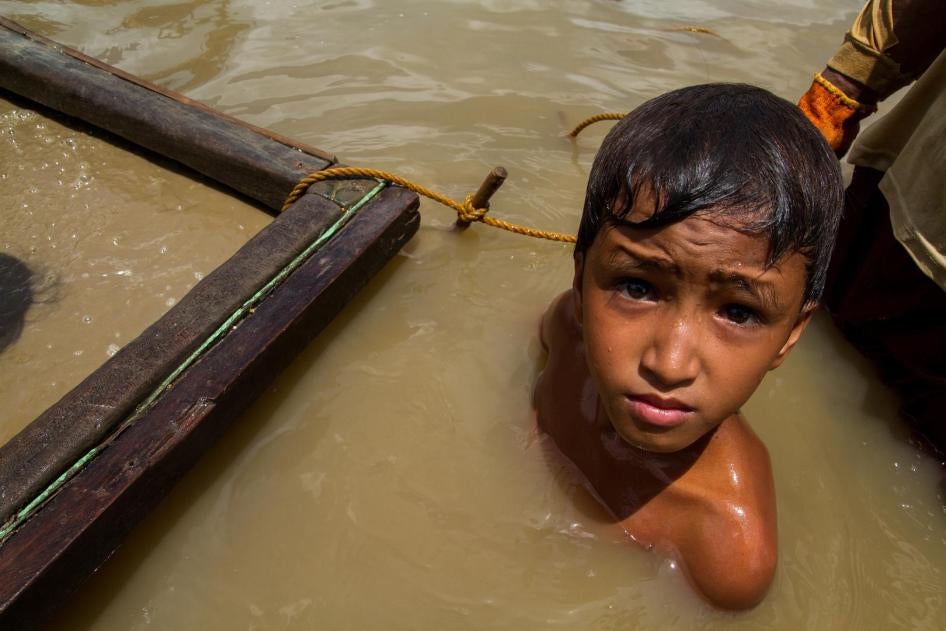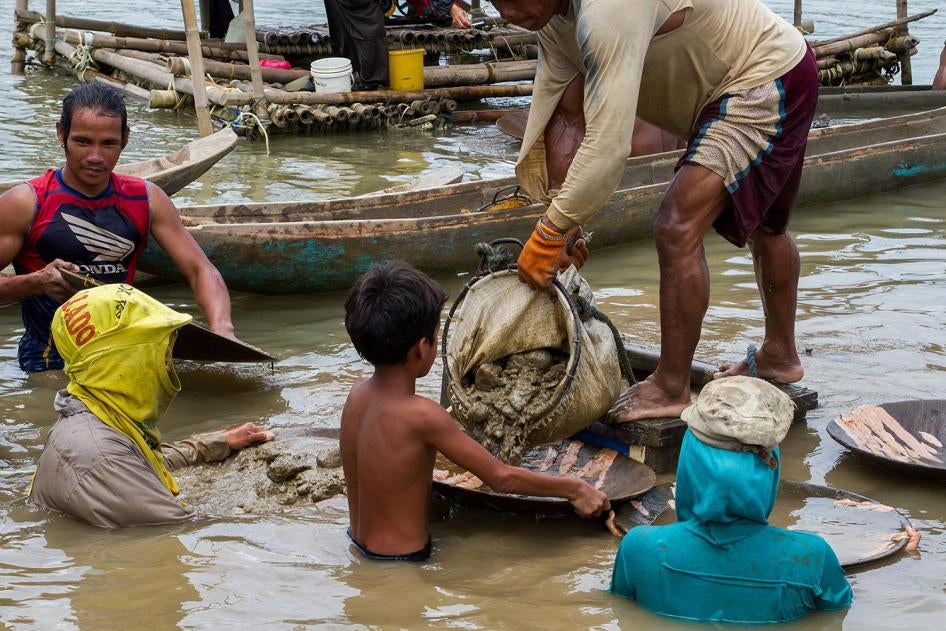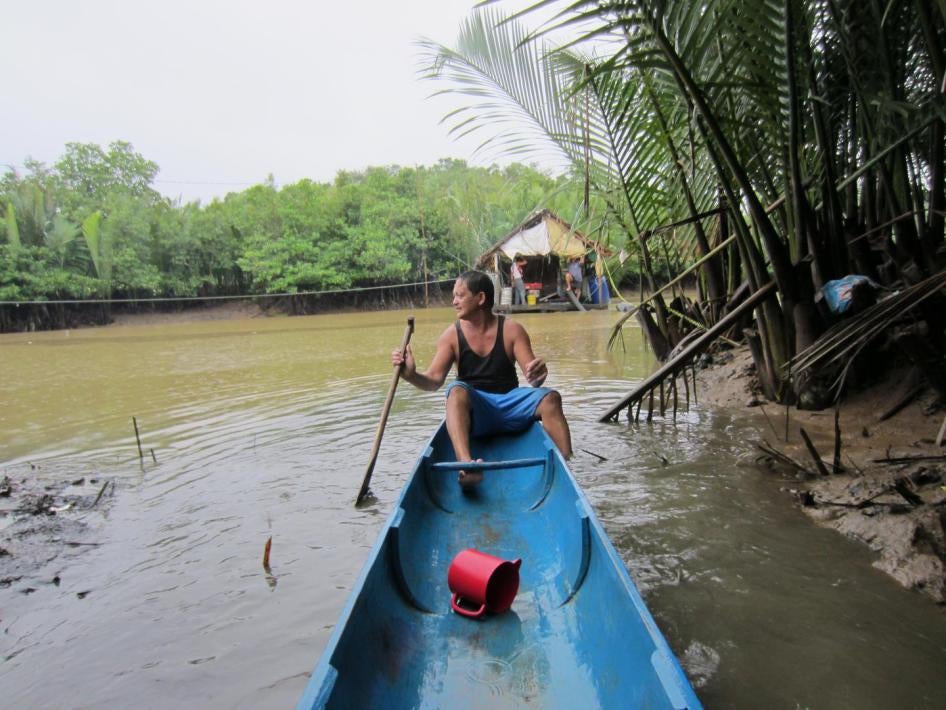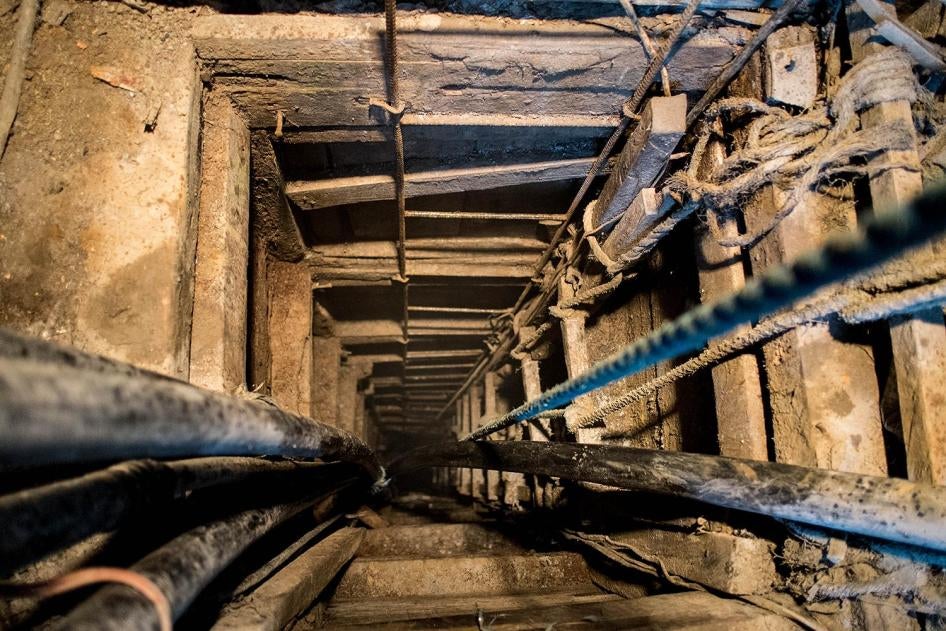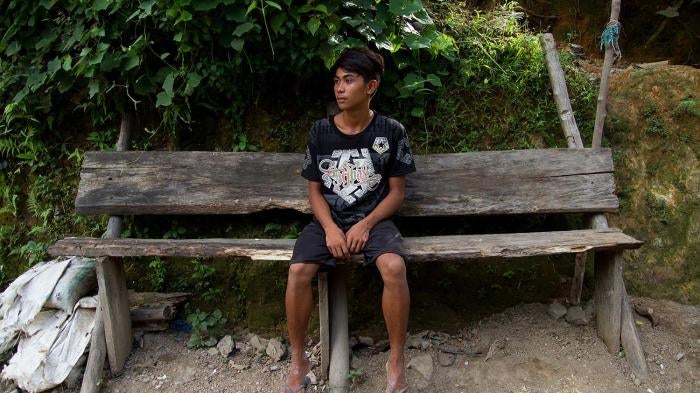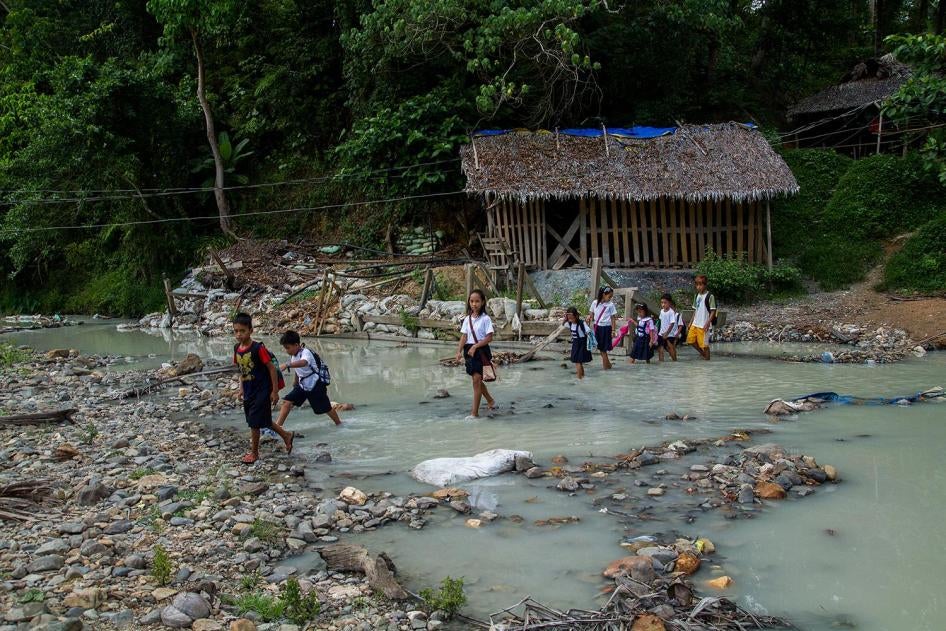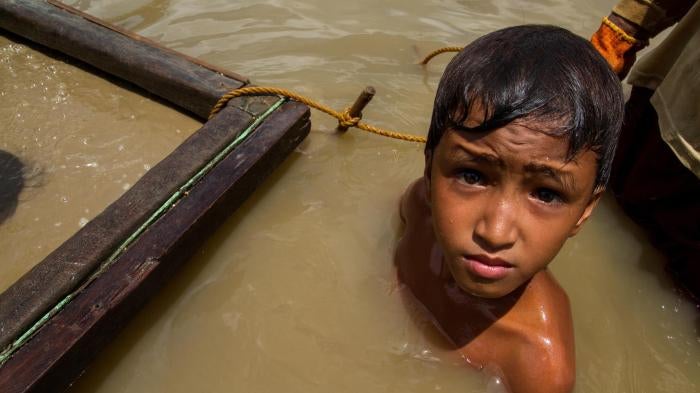In the Philippines, children dive underwater, swim down a wooden shaft barely wider than their shoulders, and mine for gold – all while breathing through a flimsy, narrow tube. We haven’t seen underwater mining – called compressor mining – anywhere outside the Philippines, but other forms of mining involving children on these islands take a more familiar form: Boys lowered 75 feet into mine pits, and small children, even 8, 9, or 10-years-old, handling poisonous mercury to separate the gold from the ore. Juliane Kippenberg, associate director of the children’s rights division, talks to Amy Braunschweiger about being at an underwater mine, the vertigo-inducing narrowness of some mine shafts, and the toll this takes on the Philippine children who work in gold mining.
Diving underwater to mine for gold sounds terrifying.
Definitely. One boy I spoke with at an underwater mining site told me how scared he was the first time he went into the murky water - it was cold and dark and he couldn’t see anything. I also met a boy who had just tried to go down for the first time the day we spoke. He was so terrified that he only stayed down for one minute and then came up. He was clearly shaken by the experience.
Mostly men do this type of mining, but boys do it as well. It is dangerous, and people have drowned, or the compressor – a diesel motor that pumps air through a miner’s breathing tube – breaks down, cutting off the air supply.
The Filipino government has good laws banning child mining and the use of mercury, but they’re simply not enforced.
Why do children work in these dangerous places?
Child labor stems from poverty, and much of the Philippines is extremely poor. Mining by children is part of daily life. Children don’t have the sense that they have a right to go to school and to have a better life. But they’re extremely aware of the immediate need to earn enough for rice for themselves and their siblings. Sometimes children get satisfaction from helping support their families. But some children we interviewed also broke down crying because they couldn’t take the hard work, pain, and pressure to earn money anymore.
Let’s talk more about the underwater mines. What are they like? How do they operate?
One rainy day we paddled in a narrow and wobbly boat to a compressor mining site. It was so wet I left everything on the shore except my notebook and camera. The riverbanks were lined with tropical plants and small homes, and the water was muddy and green-gray – you couldn’t see 10 centimeters down.
The roar of the compressor engines lead you to the site – once there, it was so loud that I had to step away from them to talk to people. The mine itself is a contraption of buoys and wooden rafts and structures. It takes at least three people to operate one of these small mines, one to dive, one to pull up the earth and ore that the miner digs, and another to oversee everything, including the diver’s oxygen supply.
We talked to one boy who smiled easily, who had started doing this work when he was 14 – he’s now 17. He had no problem going down into the mine shaft, although he admitted that building the shafts scares him. His father operated a compressor mine nearby, so he grew up with it.
What did you learn talking to kids who mined pits?
Boys go deep underground. Most pits are narrow and some go as deep as a seven-story building is tall. You look down into them and are afraid you’re going to fall in. The air quality isn’t good so far down, and you need blowers to bring in oxygen.
I met Reynaldo, a 15-year-old miner who began panning for gold at age 5. When he found gold as a young boy, his family believed he was a gifted miner. After his father died, Reynaldo became his family’s main provider. “Sometimes I’m really afraid when I go down there because I may get hit with falling rocks,” he said. He goes down the mine at 6 a.m. and stays there until 6 p.m., coming up only for lunch.
His sister doesn’t want him to mine anymore, he said, not since another village boy and his brother died in the mines two months earlier.
The whole community was shaken by the deaths. The boy had been working with others, but decided to go down another shaft. He must not have realized that this could be dangerous. He had no blower to give him oxygen, and he suffocated. His adult brother, worried about him, went down to find him and died too.
What most shocked you in your research?
The extent of mercury pollution I saw in the village of Malaya. In five years working on child miners and small-scale mining, I’ve never seen any place so visibly polluted with mercury. The water, which is the grayish color of mercury, goes straight into the river. Big rotating machines, the size of garbage cans, grind the ore, and mercury is dumped into them. We saw liters and liters of this gray, milky liquid fly out of these machines, onto the ground, flowing down to the river and into the fields. Wherever you walked in the village you saw this water. Kids played in it, swam in it, crossed it to go to school. We met teenage girls in the village who had panned for years using mercury, and some had serious health problems. The girls, like most people, didn’t know that exposure to mercury can cause heart and lung failure, brain damage, and can ultimately kill people. Two girls had regular tremors and spasms. We aren’t doctors, and there are no doctors there to diagnose or even check mercury levels, and we can’t conclude their tremors are related to mercury exposure. But it certainly makes you suspicious.
Did you meet anyone else whose story really stuck with you?
I met Evelyn, a lovely 13-year-old girl who has long hair and strong arms. She began crushing rocks and processing gold with mercury when she was 9 and dropped out of school then. Today, she supports her sick mother and four younger siblings with her work. Her father is working somewhere else.
At first we when spoke, Evelyn seemed okay with her job. “It’s just work,” she said. “As long as I can buy rice with it, it’s fine.” But as we continued talking, she began to seem upset, she looked down, she went quiet, and she didn’t speak for a while.
She said that she goes at 6 a.m. to the local mid-scale mine with a fence around it. Poor people from the village collect waste from the mine and go through it again, looking for gold. Or she gets a bag of rocks from a local trader who lets her process ore at his space for a fee. Sometimes, she pounds and processes the whole bag but finds no gold. When I asked her what happens if she finds no gold and can’t afford to pay for the space, she told me, “He lets it go.” Not that he has taken advantage of this, but she has an unhealthy dependence on him. She’s too vulnerable.
Who’s buying this gold?
Officially, the gold should be bought by the Philippines Central Bank. Unofficially, a lot of the gold is smuggled out of the country. The Philippines is the world’s 20th largest producer of gold, most of which comes from small-scale mines. Ultimately, the gold likely becomes jewelry, is used in creating electronics, or is bought by banks.
What we found concerning is that the Central Bank doesn’t check which mines the gold comes from, whether children work there, and if mercury is used. There’s no due diligence.
What do we want to see?
Poverty causes child labor, but the government hasn’t addressed the poverty in these communities. Officials should ensure that government programs reach these families, such as those that provide families small amounts of cash or rice if they keep their children in schools. There should also be programs to help children leave mining and go back to school. Schools should systematically reach out to children who drop out, something that is not happening now. And appropriate, safe employment opportunities should be made available to adolescents who are 15 or older.
The government should also enforce its child labor and mining laws instead of turning a blind eye to mining by children. In March, the government banned underwater mining and mercury use in small-scale mining. Now it needs to enforce this ban. In the long term, the government should create a legalized, regulated, child-labor-free gold mining sector that helps rural families thrive.
This interview has been edited and condensed.

